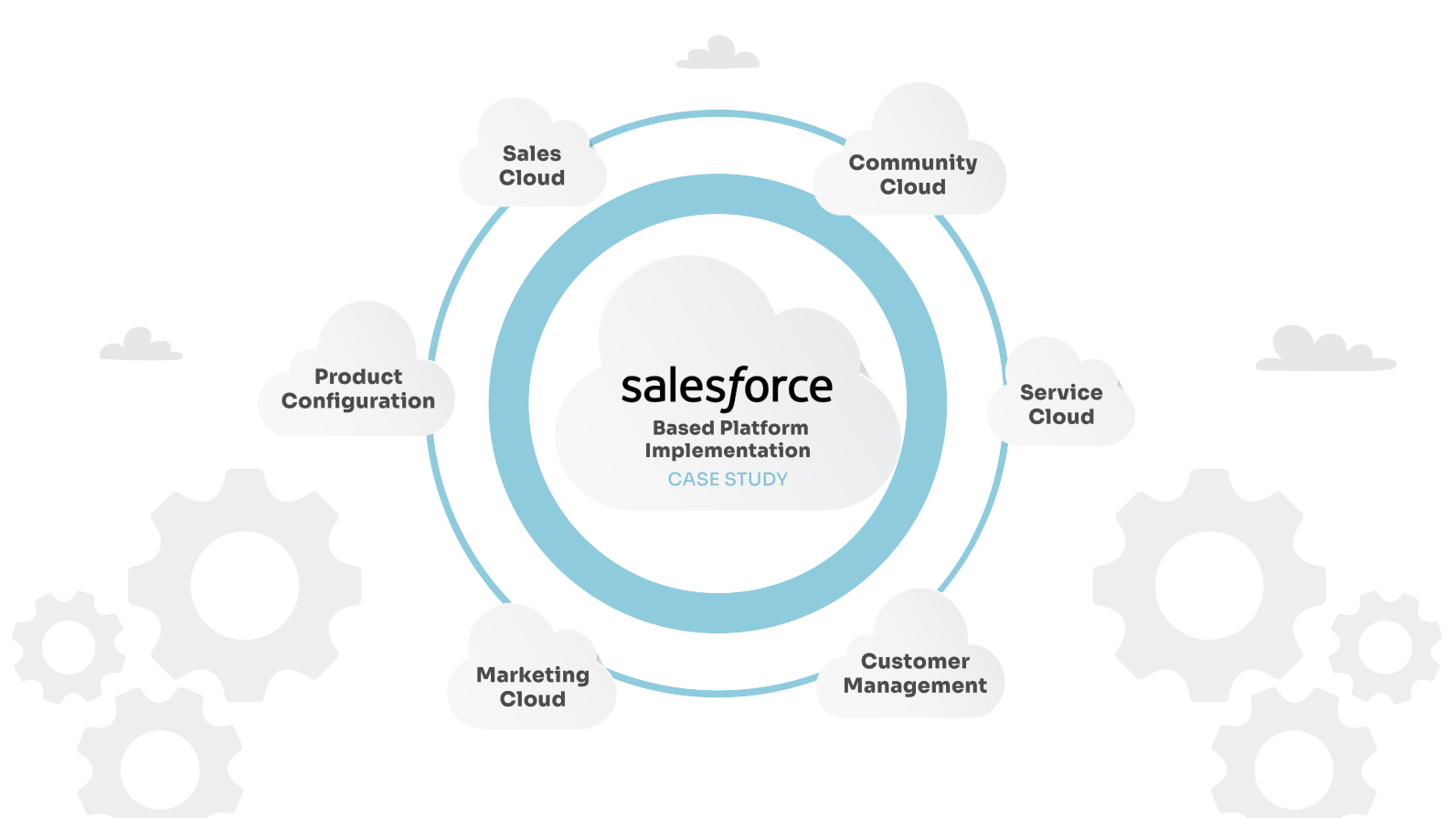
Implementation of a Salesforce-based Platform – Case Study
Background
Our UK-based client decided to launch a big transformational change and build a brand-new platform to improve the customer’s experience, rethink and streamline their business processes, manage their B2C customers more efficiently, and boost subscription sales.
The program was divided into three major phases:
- Concept Phase to convince sponsors that the project team can deliver what they need, and that the solution will help to achieve all program goals. During this phase only basic features and some of the key user journeys were delivered.
- Core Implementation Phase (the most challenging one) to create a working solution for the digital subscribers that would run alongside the legacy one for subscribers preferring the printed version. This phase also included an impressive migration of their customer base with all subscriptions.
- Final Phase to transfer the rest of the business and the remaining customers to the new platform.
As their testing partner, Allied Testing was responsible for coordination and execution of all QA-related tasks on this project.
Objectives
The client had three main project objectives to fulfill their vision:
- Boost subscription sales and customer satisfaction
- Build a versatile and suitable base of key platforms to enable digital product innovation
- Control customer data and processes and make sure the Client can adjust its platforms as needs evolve
These goals defined our testing objectives:
- Ensure that the customer’s experience is improved, so that they can easily discover and sign up for subscription offers that suit them
- Verify component and system integration requirements across all platforms that are part of the solution
- Confirm that the whole solution meets the requirements, business needs, purpose and new customer journeys
- Validate compatibility requirements on specified devices and operating systems (since it was a multi-platform solution)
- Capture user feedback on the solution and new customer journeys to identify potential change requests and enhancements
Issues and challenges
Transformation projects with ambitious goals and high expectations inevitably struggle with meeting all requirements within the specified timeframes. Our program was no exception. The key challenges to address were:
- Changing and challenging requirements
- Complex multi-system and multi-vendor environment
- Complaints from customers on a complicated and hard to follow process
- Fear of failure (previous attempt to deliver this change failed)
- Huge data volumes to migrate (millions of customers and their subscriptions)
- Both the legacy and newly built platforms running in parallel for a period of time
Resolution
After the initial analysis, the risk-based approach was deemed as the most suitable:
- Defining testing scope based on risk likelihood and impact
- Prioritizing critical areas with high costs or impact (business process disruptions, major integration issues)
- Assigning and fluctuating scripts priority in every sprint based on delivery scope and complexity of changes
- Linking testing extent to risk priority; higher priority meant more comprehensive testing
We also used the Test Pyramid concept for our complex platform, categorizing and organizing tests into different levels of granularity for structured testing throughout the delivery stages.
To mitigate some of the key issues and challenges:
| Challenge | Adopted approach | Note |
| Test various parts of the multi-system solution and their integration | ● Carry out a set of component and system integration tests based on customer journeys ● Perform functional and non-functional testing of user stories at the component level as well as their integrations |
This approach also helped us ensure system stability at critical touchpoints in the customer journey |
| Enhance the customer experience | ● Establish success metrics (such as time taken for specific customer journeys, clicks needed for subscription, ease-of-use rating on a scale of 1 to 10, etc.) ● Conduct a series of A/B tests ● Observe user interactions with the new solution and journey ● Collect user’s feedback and compare it against the success metrics ● Run performance tests |
These assessments helped us: ● Gain insights into areas that need improved ● Identify enhancement strategies ● Ensure response times at each stage of the customer journey meets expectations |
| Get the business buy-in and prove the newly built solution is fit for purpose | ● Organize acceptance testing ● Let them conduct E2E integration tests aligned with customers journeys |
This enabled the business team achieve the desired level of confidence in the final solution |
Conclusion
With clear goals and test objectives identified, great teamwork and commitment from all parties involved, risk-based approach adopted and thorough testing performed on various levels, the team managed to deliver the Program on time with very few issues reported post Go Live. Customers have shared positive feedback on newly implemented processes and user engagement has increased.
Download pdf fileback